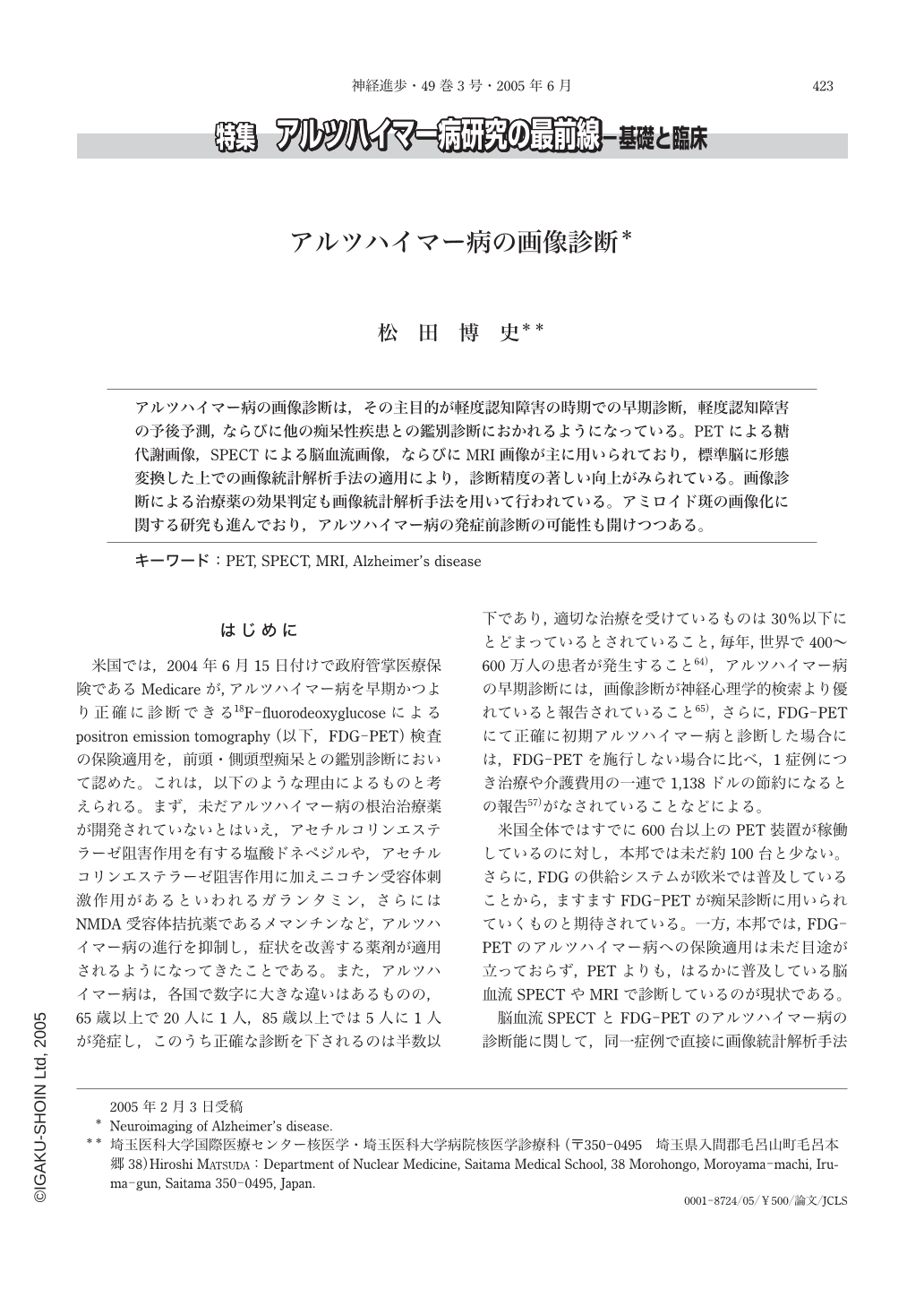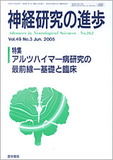Japanese
English
- 有料閲覧
- Abstract 文献概要
- 1ページ目 Look Inside
- サイト内被引用 Cited by
アルツハイマー病の画像診断は,その主目的が軽度認知障害の時期での早期診断,軽度認知障害の予後予測,ならびに他の痴呆性疾患との鑑別診断におかれるようになっている。PETによる糖代謝画像,SPECTによる脳血流画像,ならびにMRI画像が主に用いられており,標準脳に形態変換した上での画像統計解析手法の適用により,診断精度の著しい向上がみられている。画像診断による治療薬の効果判定も画像統計解析手法を用いて行われている。アミロイド斑の画像化に関する研究も進んでおり,アルツハイマー病の発症前診断の可能性も開けつつある。
Main purposes of neuroimaging in Alzheimer's disease have been moved from diagnosis of advanced Alzheimer's disease to diagnosis of very early Alzheimer's disease at a prodromal stage of mild cognitive impairment, prediction of conversion from mild cognitive impairment to Alzheimer's disease, and differential diagnosis from other diseases causing dementia. Structural MRI studies and functional studies using FDG-PET and brain perfusion SPECT are widely used in diagnosis of Alzheimer's disease. Outstanding progress in diagnostic accuracy of these neuroimaging modalities has been obtained using statistical analysis on a voxel-by-voxel basis after spatial normalization of individual scans to a standardized brain-volume template instead of visual inspection or a conventional region of interest technique. In a very early stage of Alzheimer's disease, this statistical approach revealed gray matter loss in the entorhinal and hippocampal areas and hypometabolism or hypoperfusion in the posterior cingulate cortex. These two findings might be related in view of anatomical knowledge that the regions are linked through the circuit of Papez. This statistical approach also offers accurate evaluation of therapeutical effects on brain metabolism or perfusion. The latest development in functional imaging relates to the final pathological hallmark of Alzheimer's disease-amyloid plaques. Amyloid imaging might be an important surrogate marker for trials of disease-modifying agents.

Copyright © 2005, Igaku-Shoin Ltd. All rights reserved.


